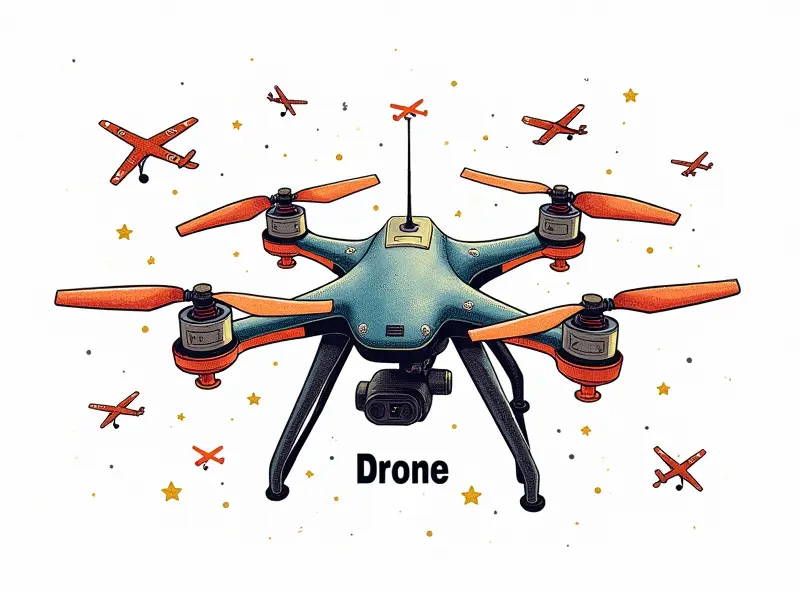Are repair drones safe?

Are Repair Drones Safe to Use?
The rise of repair drones has sparked a debate about their safety. As these unmanned aerial vehicles (UAVs) become more prevalent in industries such as construction, telecommunications, and manufacturing, it is crucial to understand the potential risks and benefits associated with their use.
Risks Involved with Repair Drones
Repair drones operate in hazardous environments where human intervention would be dangerous or impractical. However, these machines also pose unique challenges that must be addressed:
- Electrical Hazards: Working on high-voltage equipment can lead to electrocution if proper precautions are not taken.
- Mechanical Failures: Malfunctions in the drone's hardware or software could result in accidents, damaging property and endangering lives.
- Environmental Factors: Extreme weather conditions such as high winds, heavy rain, or extreme temperatures can affect the performance of repair drones.
Ensuring Safety in Drone Repairs
To mitigate these risks, it is essential to implement robust safety measures and protocols. This includes regular maintenance checks, adherence to industry standards, and continuous training for operators:
- Maintenance Checks: Regular inspections of the drone’s components ensure that all parts are functioning correctly.
- Safety Training: Operators must undergo comprehensive training on emergency procedures and safety protocols.
- Compliance with Standards: Adhering to regulatory guidelines ensures that repair drones meet minimum safety requirements.
Understanding the Hazards of Repair Drones
The hazards associated with repair drones are multifaceted and require a thorough understanding of their operational environment. This includes recognizing potential threats such as:
- Structural Integrity: Ensuring that the drone can withstand the rigors of its intended use without compromising safety.
- Data Security: Protecting sensitive information transmitted during repair operations from unauthorized access.
Safety Protocols for Repair Drones
Developing and implementing effective safety protocols is critical to minimizing risks. Key elements include:
- Risk Assessments: Conducting thorough risk assessments before deploying repair drones in any environment.
- Emergency Response Plans: Having well-defined emergency response plans for various scenarios, including mechanical failures and environmental hazards.
Navigating the Safety Concerns of Repair Drones
To navigate these concerns effectively, it is important to adopt a proactive approach. This involves:
- Continuous Monitoring: Regularly monitoring the performance and condition of repair drones.
- Innovative Solutions: Exploring new technologies and methodologies that enhance safety without compromising efficiency.
Keeping Safe While Using Repair Drones
Maintaining a safe working environment when using repair drones requires vigilance and adherence to best practices. This includes:
- Personal Protective Equipment (PPE): Ensuring that all personnel involved in drone operations wear appropriate PPE.
- Communication Systems: Establishing reliable communication channels between operators and ground control teams.
Evaluating the Safety of Repair Drones
To evaluate the safety of repair drones, it is necessary to consider various factors such as:
- Operational Data Analysis: Analyzing data from previous operations to identify trends and potential risks.
- User Feedback: Gathering feedback from operators and maintenance personnel to improve safety measures continuously.
Safeguarding Against Drone Repair Risks
Taking proactive steps to safeguard against repair drone risks involves:
- Hazard Identification: Identifying potential hazards through detailed risk assessments and environmental surveys.
- Risk Mitigation Strategies: Developing strategies to mitigate identified risks, such as implementing redundant systems or backup plans.
Protecting Workers from Repair Drone Dangers
The safety of workers is paramount when deploying repair drones. Measures that protect workers include:
- Training Programs: Providing comprehensive training programs to educate workers on the safe use and handling of repair drones.
- Safety Briefings: Conducting regular safety briefings before each operation to ensure all personnel are aware of potential dangers.
Ensuring Safety with Repair Drones
To ensure overall safety when using repair drones, it is crucial to integrate a holistic approach that encompasses:
- Regulatory Compliance: Ensuring full compliance with all relevant regulations and standards.
- Technological Advancements: Leveraging the latest technological advancements in safety features and monitoring systems.
Conclusion
The use of repair drones offers significant advantages, but it also comes with inherent risks that must be managed effectively. By understanding these risks, implementing robust safety protocols, and continuously evaluating and improving safety measures, the potential dangers can be minimized while maximizing the benefits of using repair drones.

